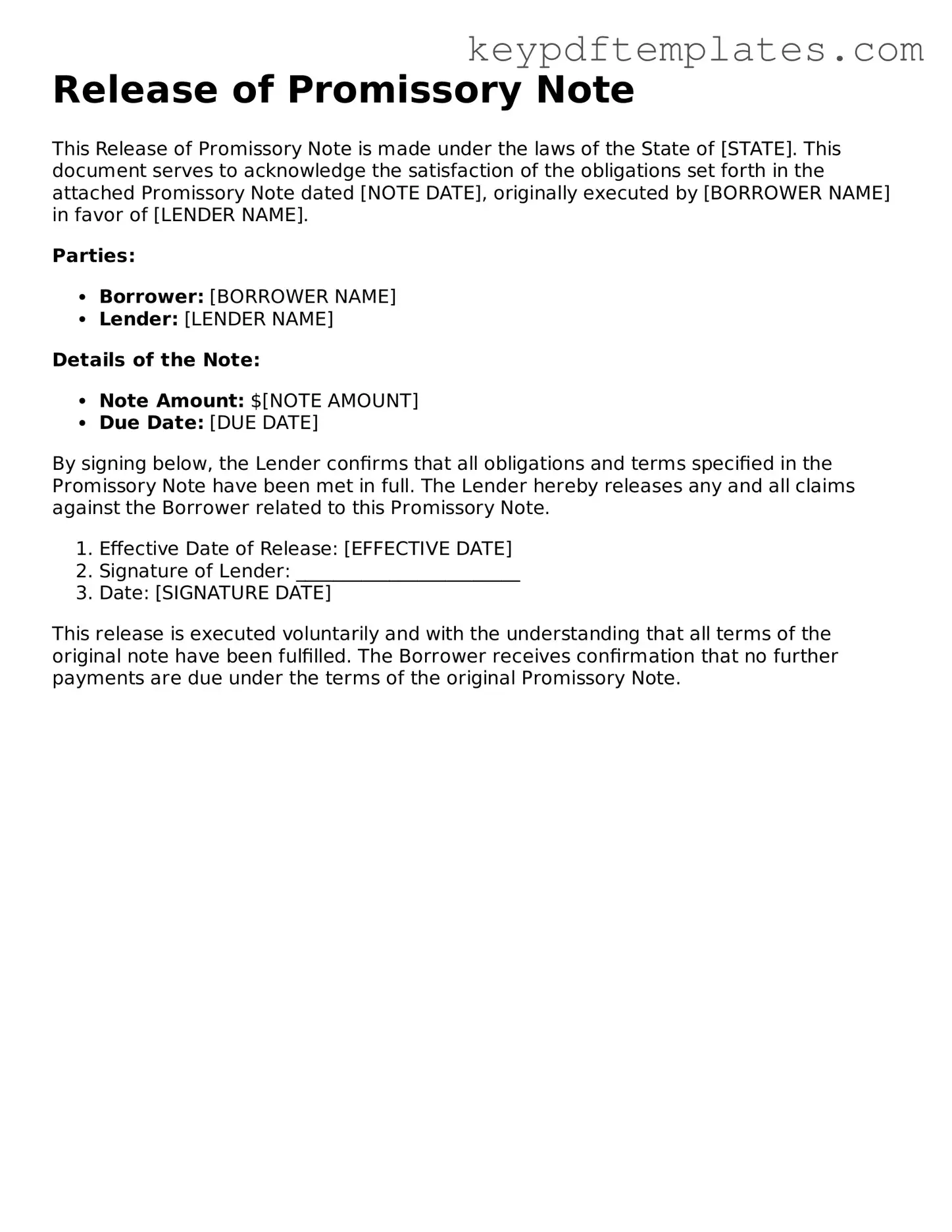Printable Release of Promissory Note Template
The Release of Promissory Note form is a legal document that signifies the cancellation of a promissory note, effectively releasing the borrower from the obligation to repay the debt. This form is essential in confirming that the lender has received full payment or has agreed to forgive the debt. By executing this document, both parties can ensure clarity and avoid future disputes regarding the loan agreement.
Modify Document Online
